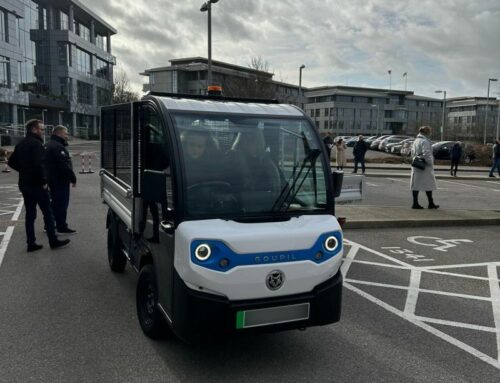WATT Electric Vehicle Company (WEVC) revealed its new light electric van at the Commercial Vehicle Show.
Designed for production of up to 5000 vehicles per annum, the innovative and highly flexible vehicle, codenamed WATT eCV1, enables a wide range of electric commercial vehicle designs, facilitating mission-specific models which meet customers’ particular fleet requirements.
Following the signing of an MoU between WEVC and electric commercial vehicle specialist, ETRUX, earlier this year, an engineering prototype is on display at the NEC, based on the WATT eCV1
3.5-tonne cab and chassis unit, complete with an ETRUX designed and built body. The next step is for WEVC’s electric vehicle platform technology will be adapted by ETRUX into a range of offerings for the commercial vehicle market.
The first of multiple commercial vehicle offerings to come from WEVC, the eCV1 uses the company’s breakthrough, proprietary PACES architecture, a sophisticated yet cost-effective modular electric vehicle platform. Developed to support commercial vehicle manufacturers, specialist vehicle converters and fleet operators in the transition to an electric future, PACES complies with ISO regulations and exceeds stringent European Small Series Type Approval safety standards.
It’s ’cell-to-chassis’ system means batteries are integrated to the primary structure (rather than having a separate battery pack), optimising stiffness, minimising weight, and maximising payload. As a result, the clean sheet design means the eCV1 has none of the structural, weight and packaging compromises inherent in most electric LCV designs, many of which having been converted from ICE drivetrains and which are further constrained by traditional high volume manufacturing processes.
The eCV1 features a central driving position which allows a safer kerbside exit for the operator, whichever side of the road the vehicle is driving or parked on. The cabin can be configured as a
one-, two- or three-seater vehicle, with the large glass house providing superb visibility making the vehicle safer to drive and easier to manoeuvre and park.
A further benefit of the central driving position is that it has allowed the A-pillars to be repositioned inboard, thus reducing frontal area and drag, a key metric in designing an efficient electric commercial vehicle. The unique platform design creates generous full standing height headroom, facilitating easy ingress and egress and a ‘walk through cabin’ option that is ideally suited for urban delivery vehicles.
The WEVC eCV1 prototype has a kerbweight from just 1750kg, delivering class leading payload and range in the 3.5t and 4.25t segments. The CV Show will be the first chance to see the functional prototype, which will be continuing test and development activities directly after the event.







Leave A Comment